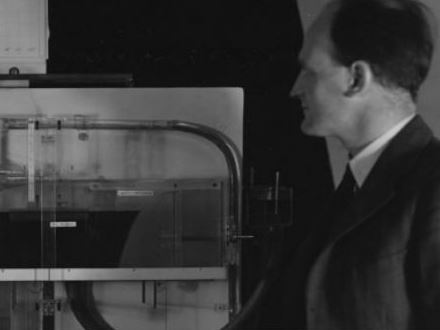 Bill Phillips and the Phillips Machine LSE History Blog
Bill Phillips and the Phillips Machine LSE History Blog
Professor Nick Barr of the European Institute attended the opening of the Science Museum’s new Mathematics Gallery, designed by Zaha Hadid, which intends to show the importance of mathematics to people’s daily lives.
One of the major exhibits in the new gallery is the Phillips Machine, developed by the late Bill Phillips, a war hero and mature student, at LSE in the late 1940s, which was used in teaching at the School in the early 1950s. Phillips, who went from student to LSE Professor in nine years during his eventful life, was best known for the Phillips Curve, which summarises the relationship between the unemployment and wage inflation over the business cycle.
The Phillips Machine shows the working of the economy, with water flowing round to represent the circular flow of income, and including saving and investment, taxes and government spending, and foreign trade.
While the machine broke new ground in its ability to simulate the economy, it has long-since been superseded by computers, but the machine still offers great visual insights into the linkages in the economy. The machine is no longer in operation, and is now accompanied by a touch-screen version in the exhibition where visitors can operate a virtual machine and see it working.
Professor Nick Barr said: ‘The gallery is stunning – a proper home for a machine that is important in the history of the subject and the life of the School’.